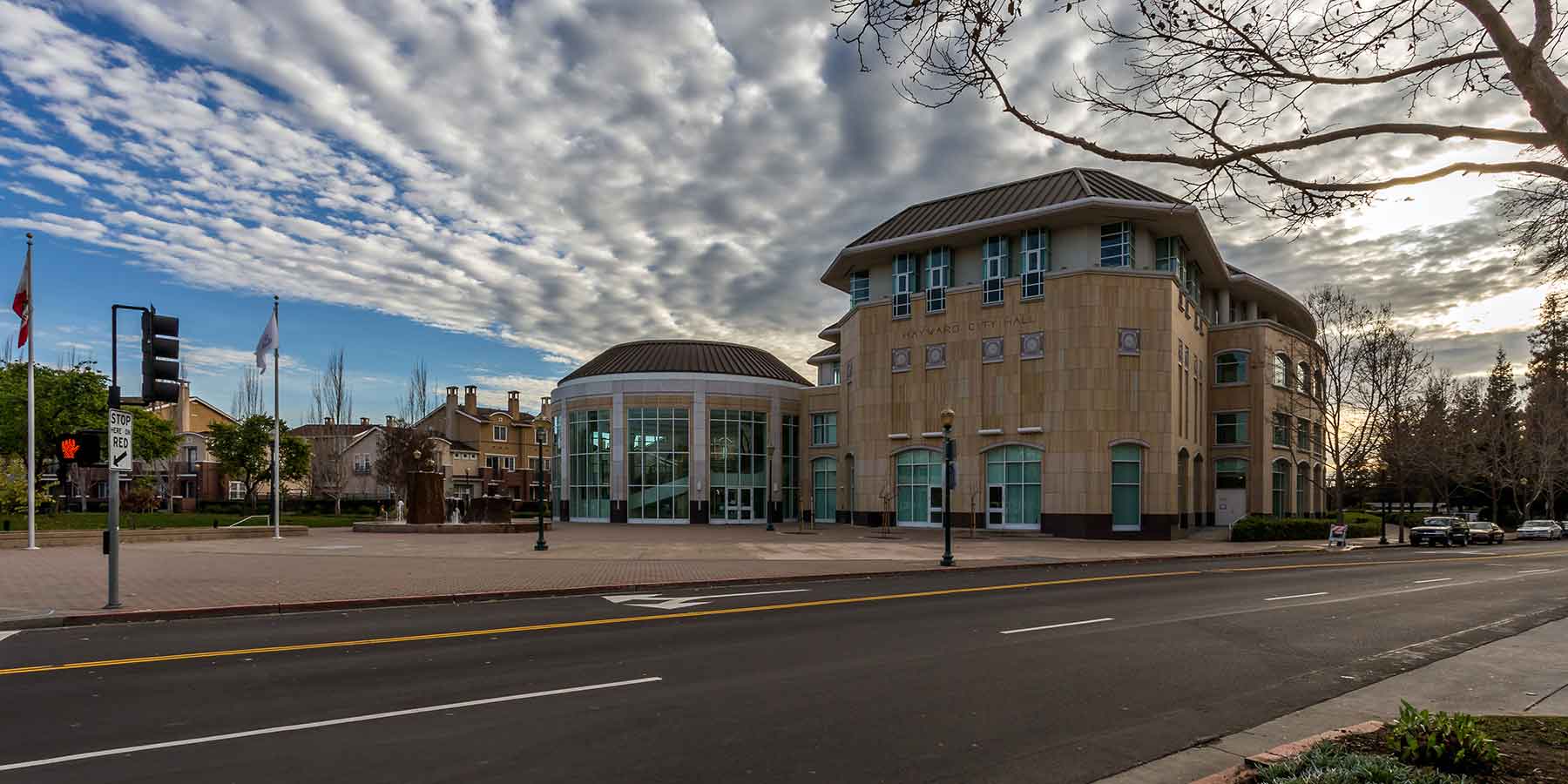Solar Power
The City of Hayward is committed to generating and utilizing renewable energy sources to operate the City’s Water Resource Recovery Facility (WRRF). Solar energy is an important resource in the WRRF’s mission to generate 100% of its energy needs and to export energy to PG&E so that other City accounts may benefit from energy produced from clean and green sources. Use of renewable energy at the WRRF is helping the City meet its goals of Zero Net Energy for City municipal services by 2025 and reducing overall greenhouse gas emissions from 2005 levels by 30 percent in 2025 and 55 percent in 2030.
What solar facilities operate at the WRRF?
The City operates a 1.6-megawatt solar facility just west of the WRRF. Phase 1 of the facility, commissioned in December 2010, includes a 1-megawatt solar photovoltaic system comprising of 5,152 panels spread over roughly 8 acres. In February 2020, the City commissioned the solar Phase 2A facility that added an additional 600 kilowatts (kW) of solar production capacity. The Phase 2A project added an additional 1,944 panels across approximately 4 acres located just north of the Phase 1 facility.
How much solar energy is currently generated?
The solar system generates various amounts of energy depending on weather and temperature. As can be expected, less energy is produced on cloudy and rainy days, while sunny days result in higher production. Since Phase 2A was commissioned in February 2020, monthly energy production has ranged from 90,000 kilowatt hours (kWh) to more than 490,000 kWh. Since 2020, annual production has been on the order of 3,500 megawatt-hours of electricity offsetting an estimated 2.2 million pounds of carbon dioxide that would have otherwise been emitted into the atmosphere. Since coming online in December of 2010, the City’s solar facility has produced over 37,000 megawatt hours of electricity offsetting an estimated 24 million pounds of carbon dioxide.

How much of the WRRF’s energy needs are supplied by solar?
When the 1-megawatt solar Phase 1 project was implemented, the solar array satisfied approximately 20% of the WRRF’s energy needs. Following the successful implementation of a cogeneration facility in 2014 that generates energy from digester gas (a renewable byproduct of the wastewater treatment process), reliance on solar energy for WRRF operations has decreased. As a result, nearly all the solar energy produced is exported to PG&E with the corresponding credits allocated to other City facilities through PG&E’s Renewable Energy Self-Generation Bill Credit Transfer (RES-BCT) program.
What are the City’s plans for future solar energy production at the WRRF?
The City has plans to install an additional 1.4-megawatts of solar capacity in the vacant land adjacent to the existing solar arrays for a total combined capacity of 3-megawatts. The additional solar facility offers the City an excellent opportunity to generate additional renewable and clean energy to help the City achieve “Zero Net Energy” status for all City facilities. Financial incentives make it possible to cost effectively construct and operate an additional installation, while meeting the City’s goal to reduce its dependence on fossil fuels.
Project Contact: Suzan England, Senior Utilities Engineer, at 510-293-5098, or by email at suzan.england@hayward-ca.gov
The U&ES Department completes capital improvement projects to ensure Hayward’s water and wastewater services meet the highest standards of quality, reliability, safety, and efficiency. In addition, facilities and programs are continuously upgraded with new technologies to meet the City's environmental goals.








